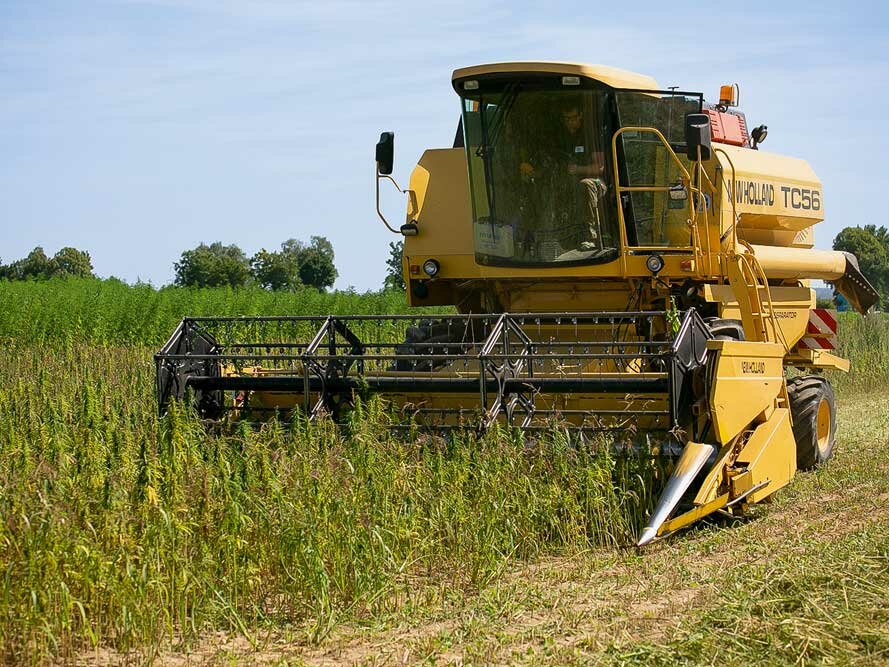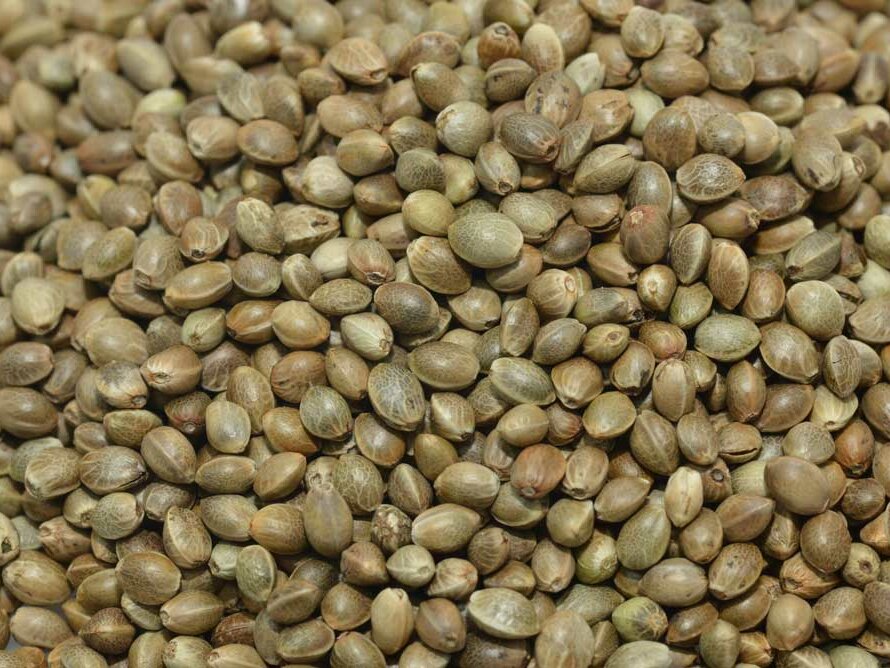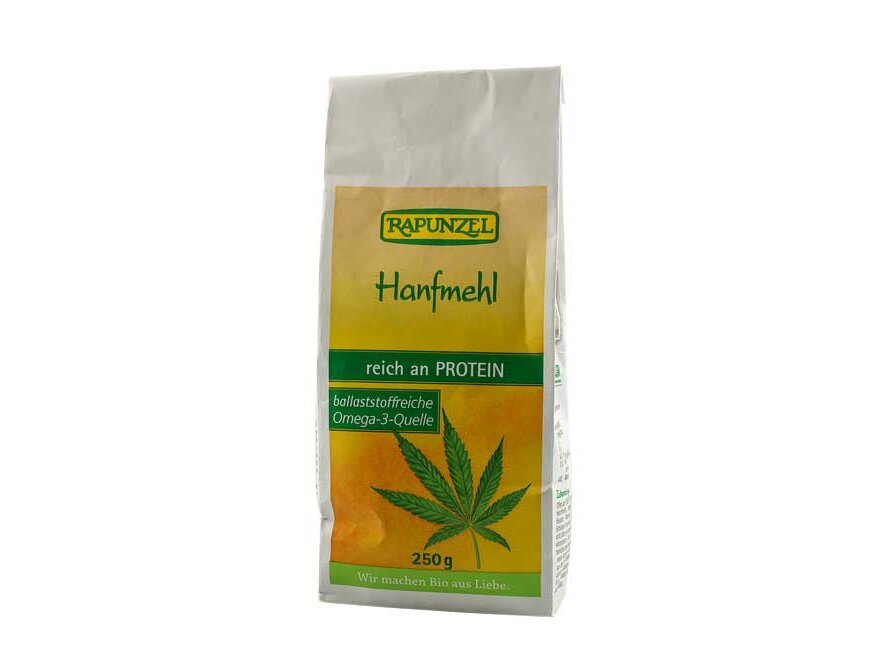Hemp: Rediscovered multi-talent
By Susanne Scholcz, Dr Maendy Fritz, TFZ, Straubing
The cultivation area of industrial hemp and the number of farms growing it in Germany increased steadily between 2012 and 2022. This development reflects both consumers' growing interest in hemp products and farmers' interest in an alternative crop. In 2012, industrial hemp was grown on just 424 ha by 95 farms. Ten years later, there were already 880 farms with a total of 6,943 ha. This means that hemp is still a niche crop with all kinds of challenges. Nevertheless, it offers potential for domestic agriculture.
What utilisation options are there for hemp?
Industrial hemp is a so-called "multi-purpose plant". Depending on the variety and cultivation, the raw materials produced - fibres, shives, grains, flowers and leaves - are used in different ways. The fibres from the stalks have long been used for the production of textiles, ropes and paper. In addition, the fibres (sometimes including the shives) can be used as insulation material. These shives are the woody inside of the stems and are used as bedding material, for packaging, as building materials, peat substitute or fuel.
At around 35%, hemp seeds have a high oil content and are used as animal feed and food. The grains are now available peeled and unpeeled as well as processed into bars, spreads, oil and protein-rich hemp flour in almost every supermarket.
The leaves of hemp plants are used for tea or cosmetic products. The cannabinoids and terpenes typical of hemp are mainly found in the flowers. These are used in a similar way to the leaves. However, the extraction of all or individual cannabinoids from the flowers to make CBD drops, for example, is more widespread. These extracts are sold at high prices in the pharmaceutical industry and as dietary supplements or flavoured oils.
In southern Germany, the focus is on grain or CBD production, where the straw is mainly regarded as a residual material. In some regions of central and northern Germany, on the other hand, there is more targeted cultivation of fibre hemp, as the necessary facilities for breaking down the fibres are available there. Efforts are currently being made to re-establish fibre cultivation in southern Germany and to set up the necessary processing facilities.
What to consider when growing hemp?
Hemp requires loose, nutrient-rich, deep soil with a good water supply for optimum yields. In the past, cultivation was widespread on fenland sites. Commercial hemp has a high water requirement and needs moderate temperatures, especially for germination and juvenile development. Once the root system is fully developed, hemp is comparatively tolerant of drought stress. However, it tolerates soil compaction worse than any other crop. Its reputation for producing good soil tilth is due more to the long-lasting shade provided by dense fibre hemp stands. It cannot break up compacted soils effectively and suffers extremely from a lack of air and waterlogging.
The well-known, very good weed suppression is also only achieved by fibre hemp. Short grain hemp stands do not achieve a sufficiently dense crop density. For the cultivation of short-straw varieties, sowing under ideal weather and seedbed conditions is therefore even more important in order to give them a head start over the weeds in their development. It is also advisable to cultivate in a wide row of 25 to 37.5 cm in order to be able to hoe between the rows. Herbicides are neither tolerated nor authorised. Insecticides and other chemical pesticides are not required.
The choice of hemp variety depends on the direction of utilisation
If mainly grains are to be produced, short varieties that can be threshed should be favoured. Maturity, branching tendency, grain size, cannabinoid content, the risk of excessive THC content in the harvested crop as well as stem thickness and fibre composition of the variety can also play a role depending on the marketing and utilisation direction.
Seed density also depends on utilisation: 80 to 100 seeds/m2 are common for grain hemp (equivalent to 5 to 30 kg/ha, depending on the grain size). If the focus is on fibre/straw use, significantly higher seed densities of 200 to 300 grains/m2 or approx. 60 to 80 kg/ha in grain row spacing are required to produce long and, above all, thin stems. If dual utilisation is planned, a compromise is necessary in order to fulfil the most important quality criteria.
Fertilising and harvesting hemp
The nitrogen requirement for all types of utilisation is 120 to 160 kg N/ha. Often 100 kg is sufficient if the location and crop are expected to produce a lower yield. Hemp generally absorbs a lot of nitrogen. The risk of nitrate leaching after harvesting is therefore very low.
The harvesting technique and time depend on the utilisation, variety and processing path: depending on this, combining, cutting or the use of special machines (e.g. for stripping) are necessary. When combining, it is important that potential areas for fibre winding are covered in the harvester. In addition, the moist grain must be dried immediately after harvesting. In fibre hemp cultivation, a distinction is made between shortening the stalks to sections that are usually around 60 cm long and long straw harvesting in a parallel position. After harvesting, the hemp stalks remain in the field for the so-called retting process, where they are turned once or twice to facilitate the subsequent separation of fibres and shives. With the exception of grain hemp cultivation, (supra-regional) contractors and/or contract farming are essential.
What is the economic viability of hemp?
There is no generalised answer as to whether the cultivation of industrial hemp is worthwhile. This depends, among other things, on the direction of use, the technology available on the farm, the site conditions and the regional processing options:
- Fibre hemp in particular requires special technology for harvesting and then several processing steps until the finished product is obtained. If there are no pulping plants in the immediate vicinity to separate the fibres from the shives, fibre hemp cultivation is generally not advisable. Long transport routes make no sense from either an economic or ecological point of view. There are also currently no spinning mills for textile production in Germany.
- Grain hemp must be dried immediately after harvesting. It can then be easily processed in regional oil mills or by food producers. However, THC limits that have been exceeded can become a problem here. Thoroughly cleaning or hulling the grains again provides a remedy, but causes increased effort and costs. This considerably reduces profitability.
- The marketing of CBD products as food (the "EU Novel Food Regulation" applies here) is also expensive and complex due to the legal situation. Marketing as a processed product where misuse for intoxication purposes can be ruled out (e.g. additive in the cosmetics sector or "flavour oil") is possible.
In principle, the entire value chain must always be considered for all types of utilisation. The purchase of all harvested products should be secured before sowing. Only then can hemp be considered as a sensible alternative to other crops.
Hemp can be flexibly integrated into crop rotations
Hemp is only distantly related to hops and can be grown as a summer crop as well as a winter catch crop (so-called winter hemp for fibre production). Fibre hemp can be grown as a summer crop after a legume, for example, leaving a weed-free, cooked soil for a subsequent winter crop. Grain hemp benefits from a preceding crop that leaves little weed pressure. As winter hemp should be sown by mid-August at the latest, it is usually preceded by a whole crop cereal and followed by a summer crop in the following February or March.
What controls are associated with hemp cultivation?
In principle, only agricultural companies are permitted to cultivate industrial hemp. In contrast to other agricultural crops, cultivation must be reported to the responsible agricultural authority via the multiple application and to the Federal Office for Agriculture and Food (BLE) via the cultivation notification by 1 July. The original seed labels must be submitted to the responsible agricultural authority; no reproduction is permitted. Only varieties listed in the "Common Catalogue of Varieties of Agricultural Plant Species" published annually on 15 March are permitted for cultivation.
In addition, when male flowering begins for each cultivated variety, a flowering notification must be submitted to the BLE, which is important for the organisation of random sampling. The hemp field may only be harvested once the BLE has either carried out the sampling on site or issued the harvest authorisation. The THC limits for harvested products are 3 mg/kg for grains and 7.5 mg/kg for the oil extracted from them.
Conclusion
Industrial hemp is "in" again as a regionally produced renewable raw material and as a foodstuff. However, there is a lack of processing facilities. This results in long transport routes with high costs, especially for fibre hemp. The grains and products made from them can be marketed directly. The problem is that the THC limits are still frequently exceeded. In addition, grain hemp unfortunately does not fulfil the advantages of weed suppression and good soil tilth attributed to hemp. Only fibre hemp offers these advantages.
Regulations for hemp cultivation
More detailed information on hemp cultivation in Germany, the necessary forms and instructions for completing the multiple application can be found at:
https://www.tfz.bayern.de/rohstoffpflanzen/einjaehrigekulturen/235967/index.php







